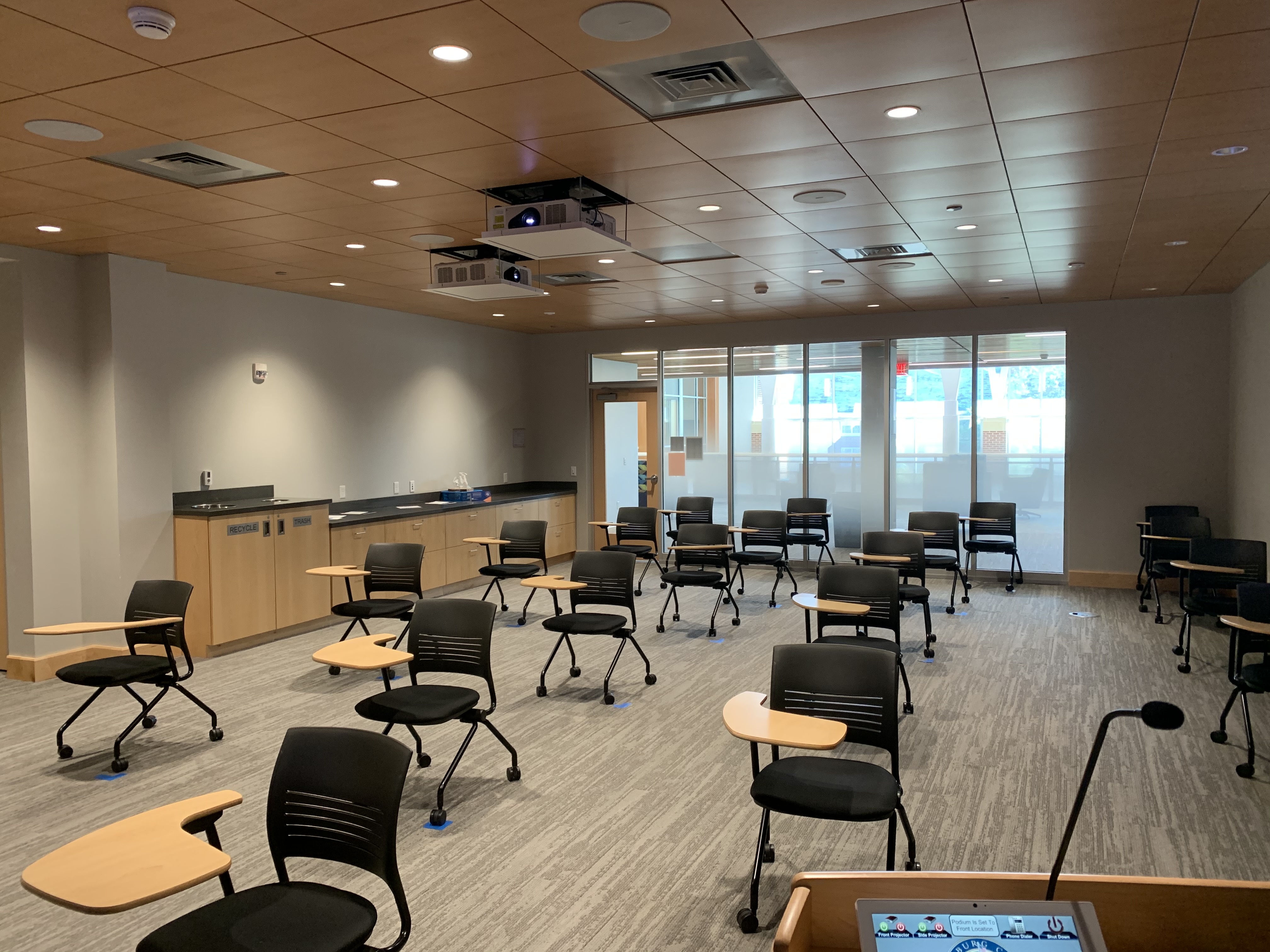
With COVID-19 vaccinations ramping up across the US, an increasing number of colleges and universities are looking toward opening up their campuses in the coming months. Among them is the University of Wisconsin, whose president recently directed chancellors to ensure students are able to attend at least 75 percent of courses in-person or in a hybrid format by the Fall 2021 semester.
After more than a year of experiencing poor audio quality or not being able to see all participants, more institutions are leveraging audio and video technologies to create a unified and seamless hybrid classroom experience for their students
Audio Takes the Lead as Critical Element in Hybrid Learning
Reliable and quality audio—or a lack thereof—can determine the overall effectiveness of a video conference, and nowhere is this more apparent than in the hybrid classroom. Darryl Krall, national sales manager at Panasonic, echoed this sentiment, “The number one thing is you have to have interference-free two-way communication between instructors and students. You have to be able to communicate clearly and concisely to offer a collaborative environment.
“When it comes to pro audio, we are seeing institutions upgrading for two reasons: Some of the audio they’ve previously had in those classrooms was old UHF wireless technology, and a lot of that signal is no longer available.” Krall continued, “Our DECT technology is enabling easier installation as well as exceptional reliability because it’s digital, and once you’re locked in, there’s little chance for interference—even classroom to classroom.” Panasonic’s WX-SR200P digital wireless microphone system uses Digital Enhanced Cordless Telecommunications (DECT) to transmit audio over a 1.9 GHz spectrum, enabling a solid, secure connection that is likely to protect against mandated frequency spectrum changes.
With mask mandates, instructors and students are now wearing masks in most classrooms. Masks act as a low-pass filter, attenuating the high frequencies (2000-7000 Hz) with the decibel (dB) level of attenuation differing by mask type. Panasonic research found surgical masks performed better than the homemade cloth mask with a filter inserted, while N95 masks were the hardest to hear frequencies. Students are more likely to hear and understand teachers wearing a lavalier microphone with a three-layer mask. To counteract the effect masks have on speech intelligibility, deploying audio technology, such as Panasonic's new WX Series Digital Microphone System, is focused on optimizing sound quality meet these challenges. Click here to learn more about why sound technology matters.
Professional Displays and Projectors Bring Remote Students into the Classroom
Large professional displays and projectors strategically placed in the classroom help integrate remote students more fully and allow for engagement between the instructor and in-class students. Depending on the room dimensions, classrooms would typically have two displays for presentation might now have three to five—creating a more engaging, immersive learning environment.
The largest image will always be in the front of the classroom. “The basic premise of the classroom stays functionally the same, but now what we’re doing is enhancing the capability of collaboration with the goal of engaging students,” Krall explained. “One of the nice things about today’s remote learning tools is there are breakout rooms for more personal interaction and collaboration, and displays help facilitate that.”
When it comes to display size, Krall said, “Really, the 65- and 75-inch displays are the sweet spot, but you’ll see a lot of 98-inch displays as well—depending upon the need and budget.” However, if the venue requires a larger viewing experience, laser projection offers a cost-effective solution, without sacrificing brightness.
With projectors, “It’s all about throw distance,” Krall said. A large screen at the back of the room might be ideal for instructors to see remote students, but for a 75-foot-long classroom, Krall warned, “If you’re projecting to the back of the room, you want to make sure the brightness of that image is not shooting into the eyes of the students.” In this case, an ultra-short-throw projector is ideal.
A benefit of an ultra-short-throw projector is it can be placed very close to the wall and still display a 120-inch diagonal image. “Depending on the size of the room, you might not be able to read text on it – but it is ideal for bringing the remote students into the classroom, and you’ll definitely see faces a lot better than on a 75-inch display from that distance,” Krall added.
Right now, while audio may be the mission-critical AV element for remote learning, Krall emphasized the importance of instructors and students having a quality viewing experience, “It’s the projector/display technology which shows what is happening in the classroom. If you hear somebody’s words but you don’t see them actually talking, it’s hard to feel engaged and immersed.”
Flexibility is the Future in the Hybrid Classroom
Out of pure necessity, the COVID-19 pandemic has catapulted the AV world three to five years ahead in every aspect of collaboration technology. Going forward, many higher ed students will have the flexibility to choose whether they want to attend class in-person or from a remote location —without taking away from the richness of the day’s discussion.
Instructors, too, will benefit from the freedom of movement that comes with Panasonic’s auto-tracking software and PTZ cameras, Krall explained, “You don’t have to wear a lanyard and you don’t have to step on a mat to track movement. Instructors like freedom and like to walk around usually, so it really enhances that collaboration and engagement from the student’s perspective.”
Ultimately, for Darryl Krall, the true value of any remote learning technology lies in the accessibility, ease of use and educational advantages it provides to students.
“We’ve got cameras, audio, and video in the classrooms—all these great technologies—but how can you now use that technology to improve student achievement?” He continued, “If I’m sitting in the back of a 300-seat auditorium, it’s hard to hear and see the instructor, but now because of hybrid learning there’s a little bit more of a personalized interaction and students appreciate that connected and collaborative learning experience.”
The next step is to bring personalized, one-to-one experiences to all students—whether in the classroom or halfway around the world. Today’s AV and collaboration technologies can help make that happen.

